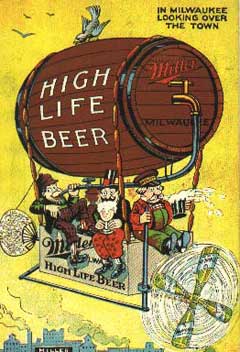So much for my plan to get through the week without writing about The Oxford Companion to Beer so that I, you know, have time to read more of it for pleasure.
Clay Risen, who blogs at The Atlantic online and presumably immediately reaches a larger audience than all us beer-specific online trolls put together, has written in defense of the book. And he hauled out the big paint brush, the one you use for broad strokes.
• He writes: “Nevertheless, online critics have made an intramural sport of identifying the book’s omissions.” And: “It’s a shame that would-be critics have spent their entire time fact-checking the precise rules of the Royal Court’s brewing guidelines under Henry VIII (subject of one catch), because they’ve overlooked the achievement of the book as a whole — though, given their vehemence, it’s a good bet they weren’t going to give it a chance in any case.”
Because Martyn Cornell and Ron Pattinson both contributed to the book, it hardly seems they weren’t inclined to give it a chance. Both have written in comments several places that they’d rather not be in the position to make corrections.
• He writes: “But what I find striking is how relatively few errors have been identified in the weeks since the book has been out. The Wiki has only about 40 entries, and most of them deal with matters of interpretation. In a book that may have upwards of 100,000 factual statements in it, the presence of a few dozen errors, while regrettable, is pretty impressive.”
Not sure where that 100,000 number comes from, but if 40 errors have been spotted in 1,100 entries that already amounts to something amiss (admittedly sometimes very small) in more than 1% of the articles. More important, the measured (and very long, so set aside some time) review at I might have a glass of beer makes it clear why every single mistake makes a difference: “One can only guess how reliable the rest of the information is.” You would think, as a journalist, that Risen would appreciate this.
• He writes: “As a dedicated drinker all but ignorant of the chemistry behind brewing, I feel I’ve already learned a lot — and I’ve only read through the five entries that start with ‘acid-.'”
Hold it. He’s only on the a’s?
 If you could climb into a machine that would take you to any time and place, what beer related destination would you pick?
If you could climb into a machine that would take you to any time and place, what beer related destination would you pick?